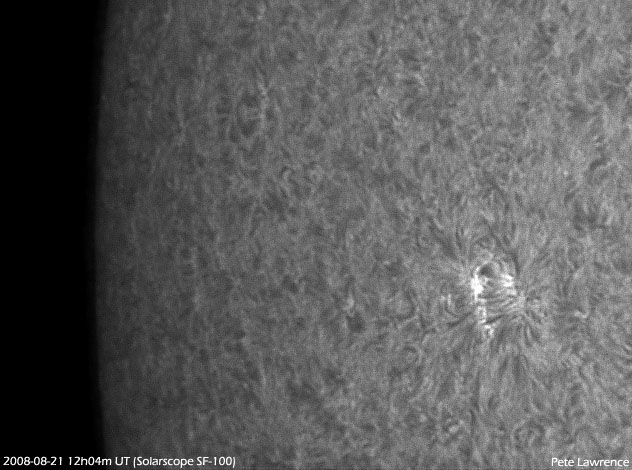Has cycle 24 of the sunspots finally begun, or was the sunspot observed on August 21 an isolated incident?

Amateur astronomers saw the first sunspot in months on Thursday, August 21, 2008. The period of relaxation in the sun's magnetic activity led scientists to assume that cycle 23 would be calm, but then came an attack of sunspots in 2006 that turned this cycle into one of the stormiest. Therefore, whether a slow start of a sunspot cycle indicates that it is expected to arrive, it is impossible to know.
Since the official start of cycle 24 in early 2008, when a pair of sunspots with magnetic polarization opposite to those of the previous cycle appeared, astronomers have been impatiently waiting for the continuation of the activity. In a 2006 paper, NASA prepared the solar community for cycle 24 to be more active than the previous cycle (which itself broke records), but after those few spots in January, nothing. In June, even experienced solar physicists began to express concern about the lack of activity.
"The sun continues to be quiet, but this is a very minor concern," said Sako Tsuneta, program director of the Hinoda Solar Observatory and a Japanese solar astrophysicist at a conference in June. Ap because no one seriously claimed that activity would continue to be quiet until the end of the cycle, but confusion began to arise as to the nature of the sun.
To complicate the situation even more, back in March there was a false alarm. suddenly The sun erupted, just three months after the start of the cycle. Sunspots, flares and coronal mass eruptions began to occur in the equatorial region. It turns out that these active sunspots were leftovers from the previous cycle.
The need to predict the space equivalent of the weather is essential. All human activity in space is affected by the activity of the sun. Thus there is an advantage in being able to predict when the next solar storm will occur. We have complex models of the sun and our observational capabilities are becoming more and more sophisticated, but we still don't know enough about what makes the sun 'tick'.
This weekend's discovery, even though it is a small blob, will excite physicists and astronomers all over the world. Will the activity continue or is this just an isolated incident? As of right now, we don't know. We have to wait, watch the sun and enjoy the surprises it prepares for us for the 24th cycle.
For the news in Universe Today
On the same topic: the sunspot puzzle

8 תגובות
big..lol
Hugin,..Monin... of,,, Putin...
Hahahahaha!!! you missed!!! I found an article without your comment:
https://www.hayadan.org.il/rocket-explodes-with-nasa-experiments-on-board-2308084/
For the beginner,
Well, you turned to me when you were still in your diapers
If so, there is still hope.
Is there a site where you can watch the sunspots?
Hugin, Munin of Odin - and Putin:
Are you sure you don't have significant breathing disorders and a critical lack of oxygen?
According to the way you write, you need a pulmonologist urgently!!!
And maybe with the addition of oxygen some logic will also return to your writing...
I will refer to the end of the penultimate paragraph: and I will reply to the author, the article, that the "tactical" factor, which is not
You know, apparently, it is no different from "ticking", the heartbeat clock, which is in each of us.
It is worth seeing these observations in the sun.
I didn't refer to the lack of a pulse, from time to time, during her big cycle... (and maybe.. yes.)
Reminds me of the parable of the cave
All these assumptions about eruptions, magnetism, gravitational forces, etc. are "exact sciences" but all the time (well not all the time, once every 100 years on average) it turns out that these sciences are far from "exact" (for example - an article was published here on the website a few weeks ago about The fact that they have now discovered that the earth is probably younger by a few hundred million years)
Maybe I don't understand exactly, I would love to hear the comments and clarifications